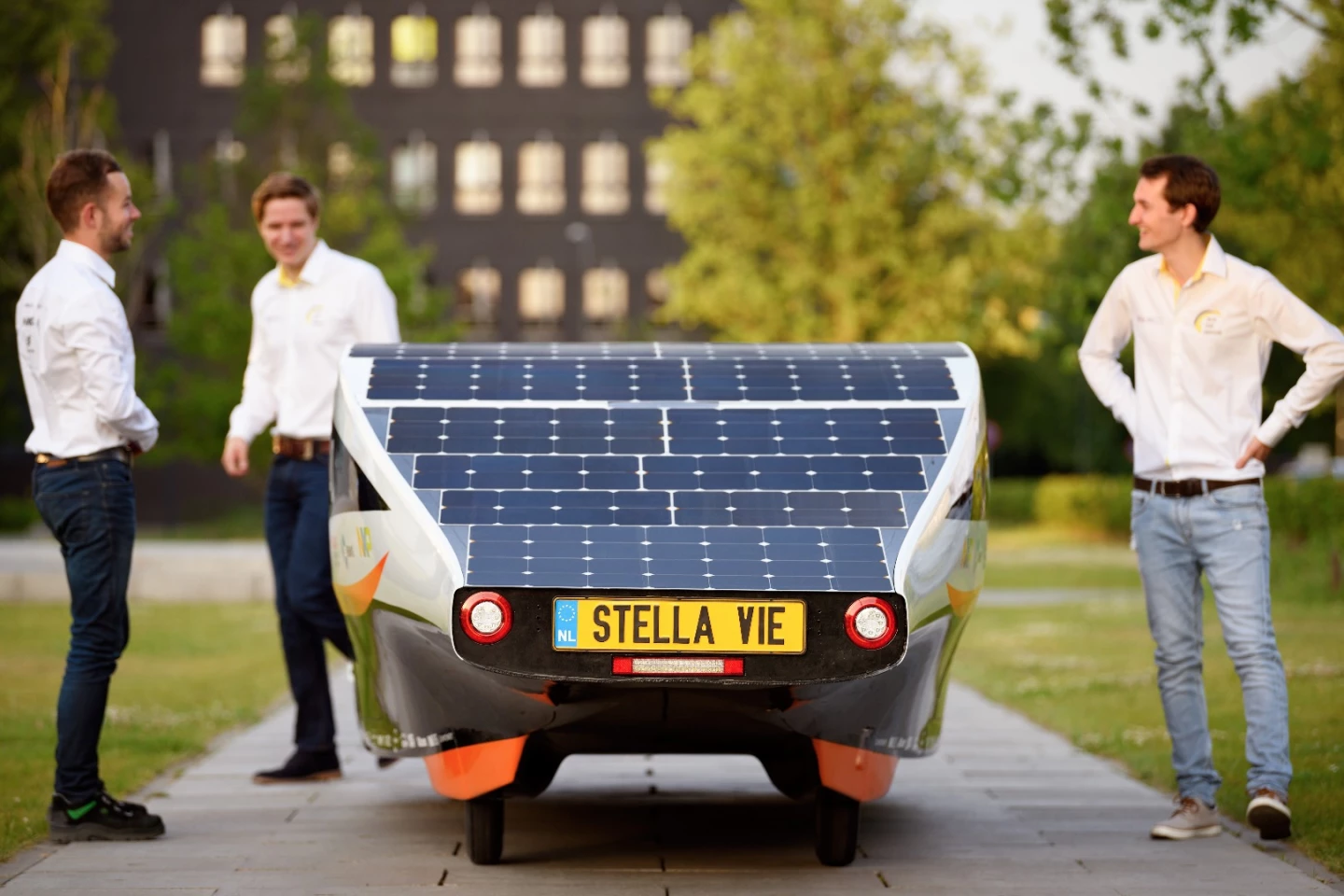It's still a few months before Australia shakes off the shackles of winter and competitors in the biennial Bridgestone World Solar Challenge (WSC) are racing through the Red Center, but teams have been busy readying their steeds. The University of Eindhoven is preparing to take on the race with the five-seat Stella Vie, which has fewer solar panels than the team's previous entries, but makes up for it with a range of smart new features.
The Stella Vie follows on from the 2015 Stella Lux, which took out the Cruiser Class in 2015 and which followed on from the original Stella that took the same honor in 2013. The original was designed to prove that solar-power can be used for a family car, while the 2015 design attempted to make the first shape sexier and more practical.
For 2017, a team of 23 students set out to turn the four-seat Stella Lux into a five-seater. The resulting Stella Via was developed and built over the course of 11 months, and will run in the Cruiser Class of the WSC through the Australian outback this October. According to the team, a new 5 m2 (53.8 ft2)solar array allows the car to cover around 1,000 km (621 mi) using the energy generated on an average summer day in Holland.

The car might be 5 m (16.4 ft) long and 1.65 m (5.4 ft) wide, but it weighs just 375 kg (827 lb). Slippery aerodynamics, with a pretty curved roof and boat tail shape, mean it should be able to cover the ground at a reasonable clip, too. Top speed is pegged at 125 km/h (78 mph), identical to what last year's Stella Lux could do given a long, straight road.
Along with software that encourages the driver to accelerate and brake smoothly, a parking navigation system takes the position of the sun into account to catch the most rays while parked. After all, on a 3,000 km (1,864 mi) drive powered entirely by the sun, every last bit of energy can make the difference.
This year's WSC will run from October 8 to 15, with teams racing the usual route down the center of Australia from Darwin to Adelaide competing in three classes: Challenger, Cruiser and Adventure. The TU Eindhoven will be competing in the Cruiser Class, which is focused on practicality and payload and energy consumption taken into account. It's a class the team has dominated in recent years and they'll be looking to make it three in a row with Stella Vie.






